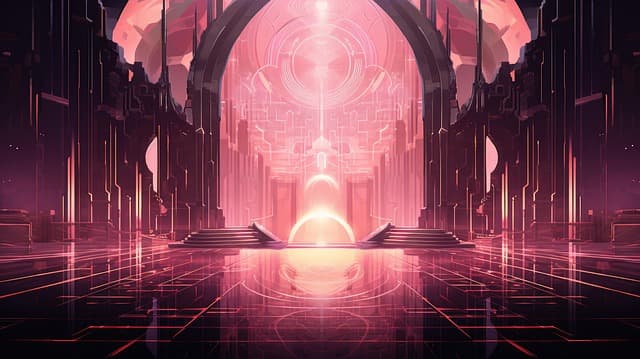Game Cycles. This is often where all newcomers stumble. How to draw it correctly? On the Internet if you google it is just unrealistically huge number of options. There are some core loops, meta loops and a lot of other different loops. What is a meta loop anyway? There was one question, and now there are a whole bunch of them… But that’s how learning works – the more we know, the more we have what we don’t know. But in our articles from the series “Game Design. Base” series, we tackle these topics. Subscribe so you don’t miss it and let’s get to the point. Today we have game cycles in our turn.
What are cycles?
Let’s start by discussing what is a cycle? As the dictionary will tell us – it is a set of phenomena, processes that make up a cycle within a certain period of time. We will modernize this definition a bit by specifying that phenomena in our game are player’s actions, and processes are the reaction of systems to these actions, i.e. feedback.
But the player cannot perform actions for nothing. We must always somehow push the player to make a decision to do this or that action. It is game designers select what triggers and in what places will be, so that the player gets the desired game experience. Well, for example, if the enemy shoots at the player, the player hides in cover and shoots back (if of course we gave him a weapon for this).
Then we get the following definition:
A game cycle is a set of recurring triggers, player actions and feedback on those actions over a period of time.
We can already work with this. Now we need to outline how the system changes over time. Designate resource flows and progress. It sounds complicated, but it’s really simple. Shooting an enemy we spend ammo – from the killed enemy we get new ammo – that’s the resource flow. What about progress – after killing 100 enemies we get a more powerful gun. This will be the progress.
Composing the cycle remember that we should not have a hole in which the resource flows irrevocably (except for donnatnatnaya currency of course ‘laughter of the evil merchant’) and that the system should always move to progression, otherwise the game will be boring and not balanced. If you take into account all these points, the movement in the game cycle will be similar to the movement of our planet in space (as if around the sun, but the sun also moves and you get a spiral).
What is at the center?
With our solar system and the game by the way have a lot in common – as you noticed in the picture the planet is not one. And the cycle is also not one. Each system: combat, dialog, quest has its own cycle. Some are bigger (just like Jupiter) and some are smaller (hello Pluto). But they all move around a core idea: player progression. Progression by the way can be linear, which is often boring, and also non-linear, which is more interesting.
Why is that? The whole point is that the human body has a tolerance mechanism. This is the adaptation of your body over time to the regular intake of certain hormones, neurotransmitters, substances, etc. It’s what causes addicts to up their dosage and painkillers to stop helping with pain. It’s also why linear progression stops seeming cool after a while.
Players need a challenge. They need challenge. It is the sense of enjoyment from difficulty that causes us to experience a surge of emotion. You succeeded – that’s joy. Fail – sadness or even anger. And the challenge allows us to build just the balance of difficulty – i.e. the player’s progress. It can be difficult because of terminology, but that’s just the way it is. There will be a lot of difficulties with terms – get used to it….
How to draw a cycle?
I offer you two methods of drawing cycles at once – trigger-emotion-action and trigger-action. I prefer the first one, but it looks more complicated, and many people in the industry for some reason start aggressively proving that we can’t design emotions. So, in order not to drag you into my camp of “emo-game-designers” I’ll first tell you about the first method, and then I’ll touch on the second one a bit. If you will be interested – we will discuss it in more detail in our other article.
So. Trigger. Action. Feedback. This is the foundation of the cycle. I recommend starting with action (from the middle yes). Write what the player can do in the game in general? In our example this would be:
- Shoot;
- Change position;
- Throw a grenade;
- Reload.
Now let’s identify the triggers that lead to these actions. Ask a question to each action through the word “Why” and try to give an answer to it. There can be several triggers for one action and this is normal.
- Why does the player have to shoot? Because he sees the enemy.
- Why should the player change position? A grenade is thrown at the player, opponents change position, cover is destroyed.
- Why does the player have to throw the grenade? To destroy the enemy’s cover and force the enemy to change position to kill the enemy
- Why does the player have to reload? There are few (or no) cartridges left in the clip.
Well, the most difficult and interesting thing is to write how the system reacts to the player’s actions? Positive and negative feedback! Hit / not hit. Killed / not killed. Spent resources. For each action, let’s also describe what the result can be when applying this or that action.
- Result of the player’s shot: hit the enemy (- HP of the enemy) ; did not hit the enemy; the player killed the enemy.
- Result of changing position: the player took damage; the player was killed.
- Grenade result: player killed an enemy; hit an enemy (- HP of enemy) ; destroyed a piece of the environment
- Reload result: restored ammo in the clip.
No alternative text for this image has been provided
But that’s only part of the gameplay loop of the combat system. Because there are more actions of opponents. It is better to describe them in a separate cycle because this cycle may already look overloaded. But for programmers so described set of actions on the contrary will be as good as possible to design the architecture of the future game.
What about emotions?
Here the scheme becomes even more complicated – we try to take into account with what emotions this or that action will be performed and think about what kind of feedback we will get, taking into account the human reaction to the emotion.
For example, you show a player something very disgusting. Disgust causes nausea. Show the player’s character feeling sick and nauseous – this will strengthen the emotional connection between the player and his avatar. Increase the emotional involvement and all further experiences of the player character will be perceived by the player as their own. You will make your game more immersive.
You can try to do it yourself using as a basis the way of building a loop given in this article. It will be interesting to compare your result with the way I do it. Perhaps you will find a better way to visualize it all.
Conclusion
Here we have covered the topic of writing game loops. Remember that there are no templates and clear rules in the gamemade industry. My scheme is what I came to. It may be different for other designers. So my advice to you is: don’t assume one thing to be true. Look at others.









